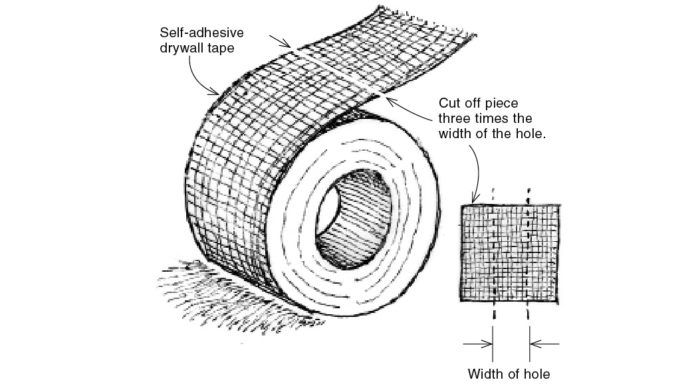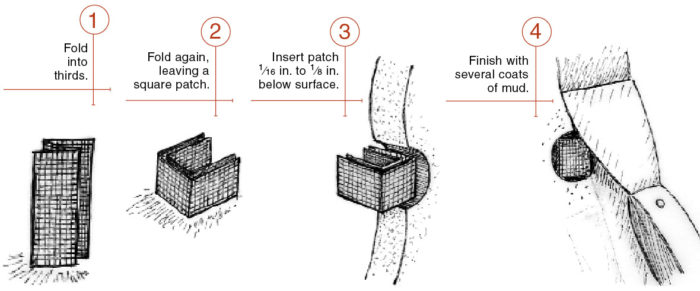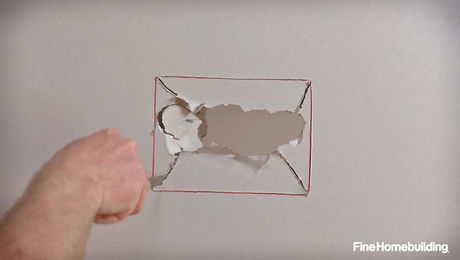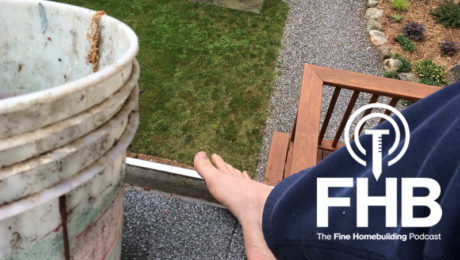Drywall Patch for Wall Anchors
Using self-adhesive fiberglass drywall tape creatively can save time and produce an invisible repair.

Patching drywall holes from wall anchors like mollies or toggle bolts is relatively straightforward, but can be a real time sink, requiring multiple coats of compound—and if done poorly, it can be a real eyesore. I have found that using self-adhesive fiberglass drywall tape creatively can save time and produce an invisible repair.
First, I flatten the edge of the hole and cut away any loose paper. Next, I take the fiberglass drywall tape and cut off a section about three times the width of the hole. I take this piece and fold it in thirds (1), then again in thirds in the other direction (2). I want the center to be square and flat as possible. I then place the patch in the hole, legs first like a staple, leaving the center section between 1⁄16 in. and 1⁄8 in. inset from the surface of the drywall (3). Then I apply joint compound or spackle (4) and sand it smooth.
— Jason Betz, Clifton, Va.
Edited and illustrated by Charles Miller
From Fine Homebuilding #276






























View Comments
I smack anchors, mollies, etc. in drywall with my hammer. Just enough to countersink.
A couple swipes of mud, and you're good to go.
Rockinroger, I must say I like Jason's suggested method better than knocking it in with a hammer, on two counts. Creating the dimple to fill implies damage to the drywall on the back side, and risks making an even bigger hole. Second, drywalling over the head of the molly, especially a very thin coat, seems likely to result in something similar to a nail pop later on. It looks good at first, but will result in problems later.
Recently, I had to fill a small hole after removing a water supply line to a toilet. I used a California Hot Patch which I've used a lot. Cut out a square of some left over sheetrock that is about 4" bigger than to hole. Score and snap off 2" of the core leaving the paper and the filler intact. Score and peel the paper of the sheetrock surrounding the hole a 1/4" bigger than the patch. Make the hole 1/8" -1 /4" than the sheetrock core of the patch. Butter the inside of the hole , raw sheetrock, and sheetrock core patch. That makes a key, like on plaster and lath. Center the patch. Skim 2 coats the patch in place, and the paper is in the same plane to match.